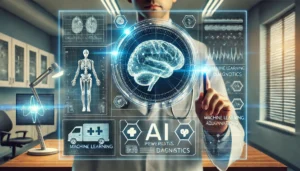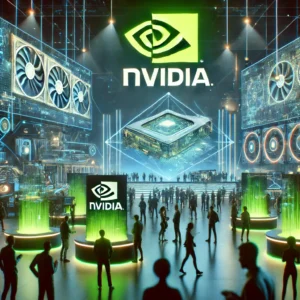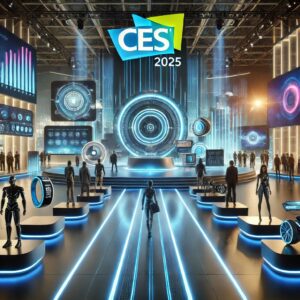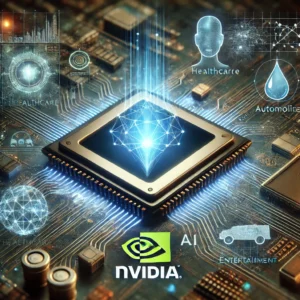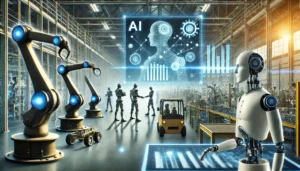The Generative AI Boom: Transforming Industries One Algorithm at a Time
Introduction
Generative AI is reshaping industries at a breakneck pace, transforming the way we work, live, and interact with technology. From healthcare to entertainment, finance to education, this revolutionary branch of artificial intelligence is making its mark by creating new possibilities and solutions. In this article, we’ll dive deep into how generative AI is transforming various sectors, the underlying technologies driving it, and the implications for our future.
What is Generative AI?
Definition of Generative AI
Generative AI refers to a subset of artificial intelligence that focuses on creating new content from existing data. Unlike traditional AI, which often relies on rule-based systems, generative AI uses advanced algorithms to generate novel outputs, such as images, text, music, and even complex simulations.
Brief History of AI
AI has been around for decades, with early developments dating back to the 1950s. The evolution from simple rule-based systems to machine learning and now to deep learning has paved the way for the rise of generative AI, which leverages these advancements to create sophisticated models capable of generating high-quality, diverse content.
The Core Technologies Behind Generative AI
Machine Learning (ML)
Machine learning is the foundation of generative AI, involving algorithms that allow computers to learn from and make decisions based on data. ML algorithms are crucial for training generative models to recognize patterns and produce realistic outputs.
Deep Learning (DL)
Deep learning takes ML to the next level with neural networks that mimic the human brain’s structure. These networks are essential for handling large datasets and complex tasks, making them ideal for generative AI applications.
Neural Networks
Neural networks are the backbone of deep learning, consisting of layers of interconnected nodes that process information. Generative AI models often use sophisticated neural networks, such as Generative Adversarial Networks (GANs), to create realistic and innovative content.
Generative AI in Healthcare
Revolutionizing Medical Imaging
Generative AI is revolutionizing medical imaging by enhancing the accuracy of diagnostic tools. AI algorithms can generate high-resolution images, helping doctors detect diseases earlier and with greater precision.
Drug Discovery and Development
In drug discovery, generative AI accelerates the development process by simulating the behavior of chemical compounds. This speeds up the identification of potential new drugs, reducing the time and cost associated with traditional research methods.
Generative AI in Finance
Algorithmic Trading
Generative AI is a game-changer in algorithmic trading, where it analyzes vast amounts of market data to identify patterns and make profitable trading decisions in real time.
Fraud Detection
AI models can generate simulations to predict and prevent fraudulent activities, providing a robust defense mechanism against financial crimes.
Generative AI in Entertainment
Content Creation
In the entertainment industry, generative AI is used to create music, art, and even entire movies. AI-generated content can significantly reduce production times and costs while offering new creative possibilities.
Virtual Reality and Gaming
Generative AI enhances virtual reality experiences by creating immersive environments and realistic character interactions, making games more engaging and lifelike.
Generative AI in Retail
Personalized Shopping Experiences
Retailers use generative AI to provide personalized shopping experiences, analyzing customer preferences to recommend products and create tailored marketing campaigns.
Inventory Management
AI-driven inventory management systems predict demand patterns, optimize stock levels, and reduce waste, ensuring a more efficient supply chain.
Generative AI in Education
Customized Learning Experiences
Generative AI in education enables the creation of customized learning experiences, adapting content to suit individual student needs and learning paces.
Automated Grading Systems
AI-powered grading systems can assess student assignments quickly and fairly, freeing up educators to focus on teaching rather than administrative tasks.
The Impact of Generative AI on Jobs
Job Displacement
While generative AI automates many tasks, it also raises concerns about job displacement, particularly in roles that involve repetitive or routine work.
New Opportunities in AI Development
On the flip side, the rise of generative AI creates new opportunities in AI development, data science, and related fields, driving demand for skilled professionals.
Ethical Considerations in Generative AI
Bias and Fairness
Generative AI models can inherit biases from training data, leading to unfair or discriminatory outcomes. Ensuring fairness and transparency in AI systems is a critical ethical concern.
Privacy Concerns
The use of personal data in training AI models raises privacy issues, necessitating stringent data protection measures to safeguard user information.
Generative AI and Cybersecurity
Threat Detection
In cybersecurity, generative AI helps detect threats by simulating attack scenarios and identifying vulnerabilities before they can be exploited.
Automated Response Systems
AI-driven response systems can automatically neutralize cyber threats, reducing the time and effort required for manual interventions.
Generative AI in Art and Design
AI-Generated Artwork
AI-generated artwork is gaining popularity, with AI models creating unique pieces that challenge traditional notions of creativity and authorship.
Graphic Design Innovations
Generative AI tools streamline graphic design processes, enabling designers to experiment with new styles and concepts more efficiently.
Challenges in Generative AI Implementation
High Computational Costs
The computational demands of training and running generative AI models are significant, posing a challenge for many organizations.
Data Quality and Availability
High-quality data is essential for effective AI training, and ensuring access to reliable datasets can be a hurdle in developing generative AI systems.
Future Trends in Generative AI
Advancements in Natural Language Processing
Future advancements in natural language processing (NLP) will enhance AI’s ability to understand and generate human-like text, improving applications like chatbots and virtual assistants.
Integration with IoT
Integrating generative AI with the Internet of Things (IoT) will enable smarter, more autonomous systems capable of real-time decision-making across various industries.
Conclusion
Generative AI is undeniably transforming industries one algorithm at a time, offering unprecedented opportunities and challenges. As we continue to explore its potential, it’s essential to address ethical considerations and ensure that the benefits of this technology are accessible to all.
FAQs
- What is the difference between Generative AI and traditional AI? Generative AI focuses on creating new content, while traditional AI typically analyzes existing data to make predictions or decisions.
- How is Generative AI used in healthcare? Generative AI improves medical imaging, accelerates drug discovery, and enhances diagnostic tools, contributing to more efficient healthcare solutions.
- Can Generative AI create jobs? Yes, it creates jobs in AI development, data science, and other tech-related fields, although it may also displace some traditional roles.
- What are the ethical concerns of Generative AI? Ethical concerns include bias in AI models, privacy issues, and the potential for misuse in creating deepfakes or other harmful content.
- What is the future of Generative AI? The future of generative AI includes advancements in natural language processing, integration with IoT, and broader applications across various sectors.
Please don’t forget to leave a review.
on Techcyclohub
___________________________________________________________________________________________________
Book Recommendations
- “Artificial Intelligence: A Guide to Intelligent Systems” by Michael Negnevitsky
- “Deep Learning” by Ian Goodfellow, Yoshua Bengio, and Aaron Courville
- “Machine Learning Yearning” by Andrew Ng
- “Life 3.0: Being Human in the Age of Artificial Intelligence” by Max Tegmark
- “Superintelligence: Paths, Dangers, Strategies” by Nick Bostrom

